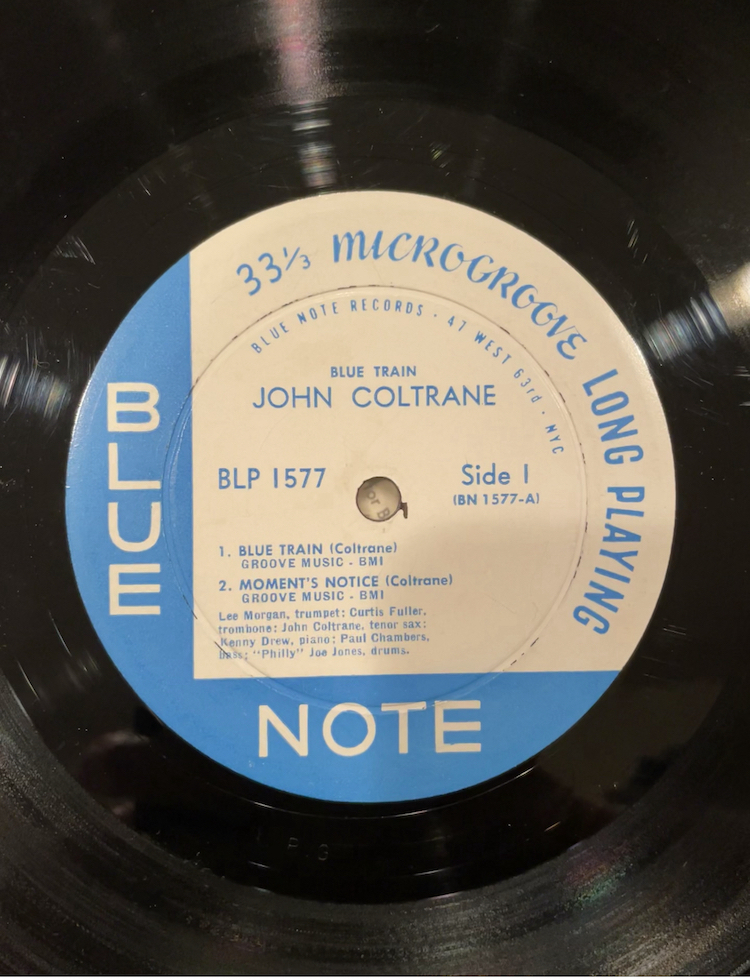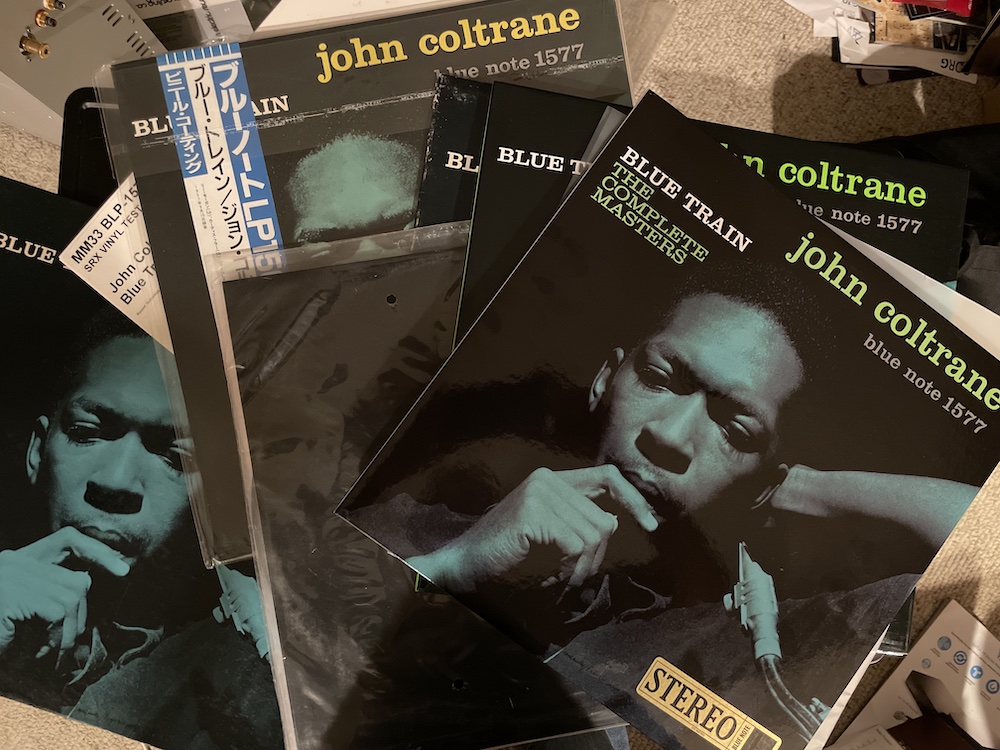Tangled Up In "Blue Train"
The new reissue is the one to have
Blue Train is old enough to be on Social Security, yet this reissue (with an additional album of alternative takes) seems to have created a stir probably greater than when it was first released January, 1958. Rudy Van Gelder recorded it in his Hackensack, New Jersey home studio, September, 15th 1957, 65 years ago to the day I’m writing this.
Blue Train is the only album Coltrane recorded for Blue Note. He’d signed with Prestige and did this “one off” built upon a handshake with Blue Note co-founder Alfred Lion, according to Ashley Kahn’s useful annotation.
What makes Blue Train so re-releasable to be discovered generation after generation? Maybe it’s the triple horn arrangements that soar with Blue Angel precision (understandably more so on the finished release than on the more tentative “bonus album” versions)? Maybe it’s the title tune’s easy to absorb bluesy vibe? Maybe it’s the pulsating, understated swagger of Miles’s rhythm section of Philly Joe Jones and Paul Chambers that keeps the time complexity in the groove aided by Kenny Drew’s bluesy comping? Or the vibrant playing of youngsters on the ascent? Lee Morgan was 19. Curtis Fuller 25 and Coltrane not yet 30? Maybe it’s hearing Coltrane “coming into his own” on this record both as an original improviser and writer/arranger?
Probably all those things and more. Anyone who goes into listening thinking the trombone is not a cool instrument comes away knowing better, that’s for sure! In his excellent Curtis Fuller New York Times obituary, jazz critic Giovanni Russonello writes “On the title track, now a jazz standard, his trombone plays a central role in carrying the bold, declarative melody. Mr. Fuller’s five-chorus solo…begins by playing off the last few notes of…Lee Morgan’s improvisation, as if curiously picking up an object a friend had just put down. He then moves through a spontaneous repertoire of syncopated phrases and deftly wrought curlicues.” Fuller had arrived in New York about five months before recording that solo.
Whatever makes Blue Train the enduring classic that it clearly is, this latest and possibly final vinyl statement of its greatness combines a fresh, vibrant, modern sounding mastering with a second album of alternate takes that led the way and demonstrate the differences between “working towards” and getting there. Blue Note budgeted for rehearsal time. Prestige did not.
With the original firmly locked in many listeners musical DNA hearing the earlier takes makes clear how much work went into shaping the music’s final form and its crisply executed architecture. Kahn’s annotation is a forensic dive into how the musicians climbed the mountain and reached the peak. We also learn in the notes that a piano solo in the finished “Moments Notice” was lifted from an earlier take. To present the earlier complete take required removing the splices and returning the section of tape back into the earlier take.
The Stoughton Press laminated “Tip on” gatefold edition features iconic Francis Wolff black and white photos with a full-sized booklet sandwiched in between, led by a blue tinted photo of a contemplative Coltrane facing a Neumann microphone above which are charts on a music stand. What a great shot! More photos follow, interspersed among the annotation. You even get a gold "stereo" sticker on the cover, which is how early stereo Blue Notes were distinguished from their mono counterparts. BN didn't originally produced separate stereo artwork.
The booklet’s back page is a collage of tape boxes including ones labeled “STEREO MASTER… original tape” and another labeled “MONAURAL…MASTER.” At this time apparently Rudy ran separate mono and stereo recorders and microphone feeds. In other words, he was not recording to two tracks intending to mix down the mono for the “authentic” Blue Note sound.

Look, if BN fanatics prefer the original mono version, which I own—deep groove, 47 West 63rd, ear and RVG—good for them, but I think that’s deeply cultish. Speaking of cults, yes I know the original very first original has 23rd street on one side and there’s no print weirdness on Curtis Fuller’s forehead etc. The original, which has noisy vinyl even on the quietest of pressings is surely not what Rudy recorded or wanted listeners to hear. The bass cut and compression were done to make the record playable on the phonographs of the time—particularly the turntables owned by the Blue Note buyers back then, many of whom were not from the monied classes. That he had to compromise his sound for the vinyl original is a reason he early on embraced the digits.
Today’s monied class pays the big bucks for those originals but if you want to hear what’s on the tape, the dynamic range, the bass, the stereo spread, the timbral richness and textural completeness (where the reediness of Coltrane’s sax replaces the original’s kazoo-sound), this new reissue gives it all to you. If you insist on its ‘mono’ greatness there's a "Tone Poet" mono version equally well packaged but minus the booklet and costing less. Or try to score the out of print Music Matters SRX pressing (MM33 BLP-1577 A/B), but it will cost you.
Honestly, this new edition, is in every way, the best sounding, most historically complete, visually stunning Blue Train ever and the price is righteous. Two miracles: one is that the Scotch 111 original tape is in such incredible condition 65 years on (much better shape than most 65 years old who might buy the reissue). The sound here is full-bodied and immediate—even Kenny Drew's piano avoids the Rudy piano hollowness found on many of his recordings. The second is that in 2022 we are getting the best vinyl reissues ever and they are being bought by young people! Buy! Listen! Enjoy! Look at it on the shelf next to your Tone Poets! Or if you insist, next to your original.













































.png)








